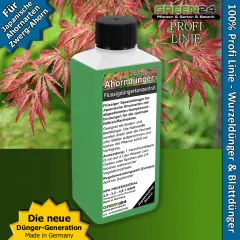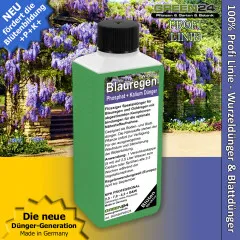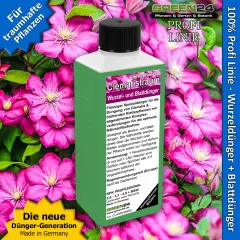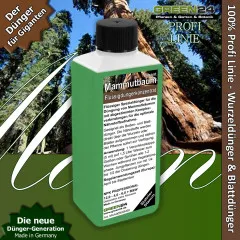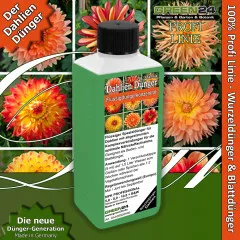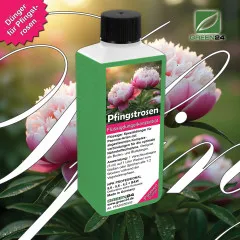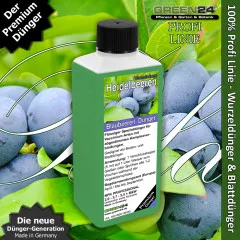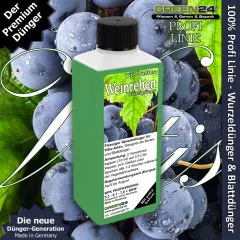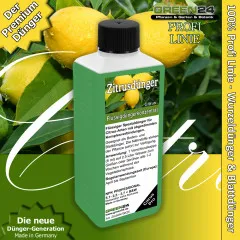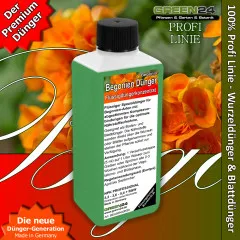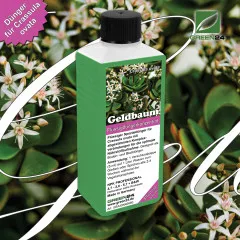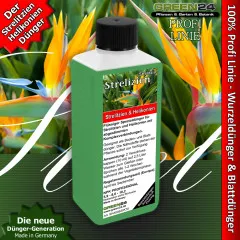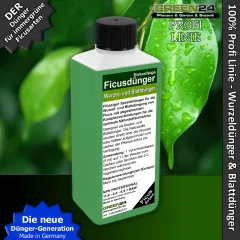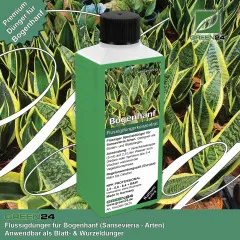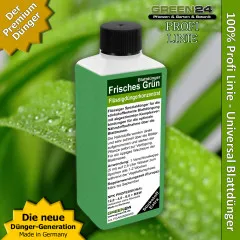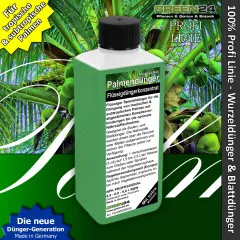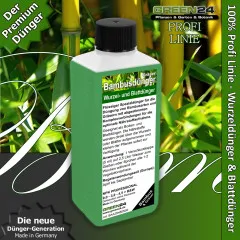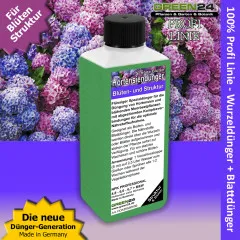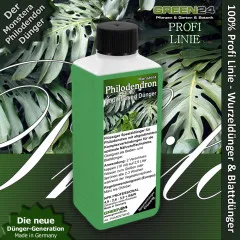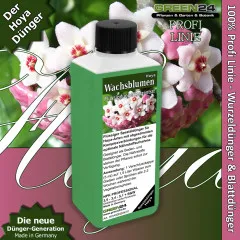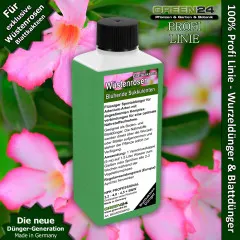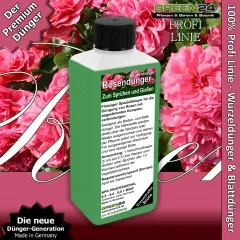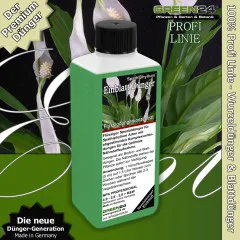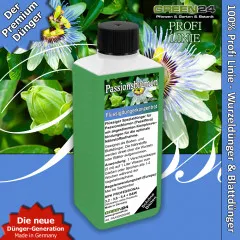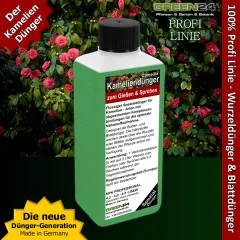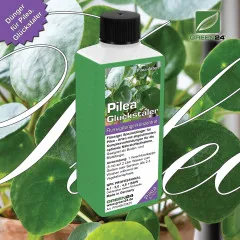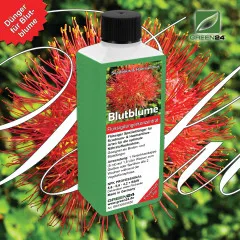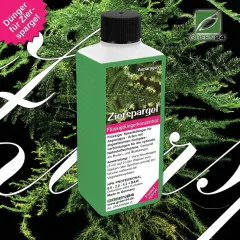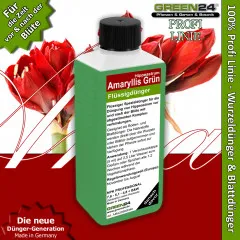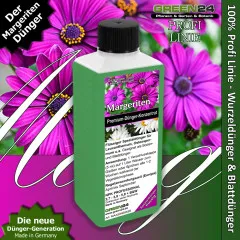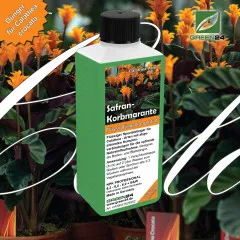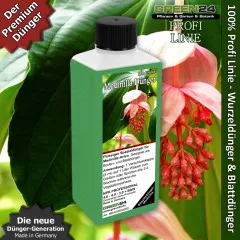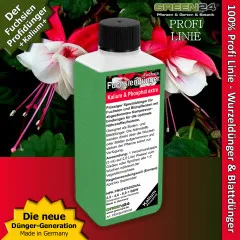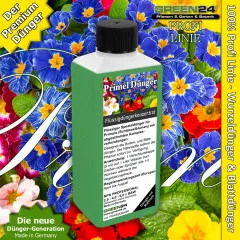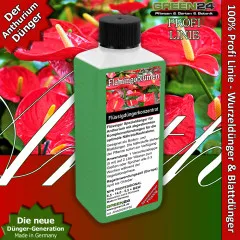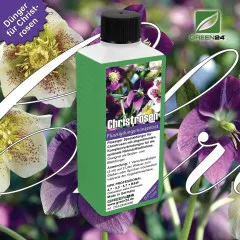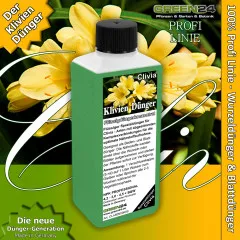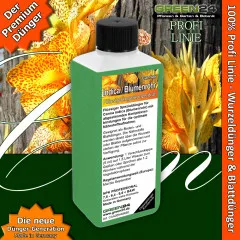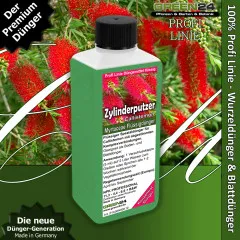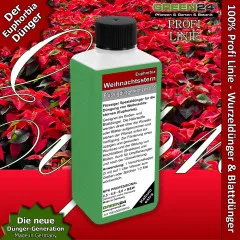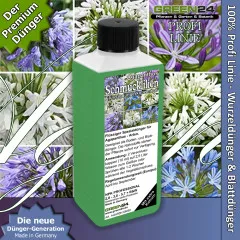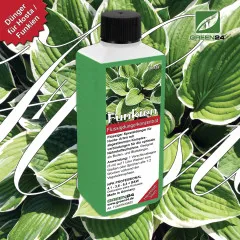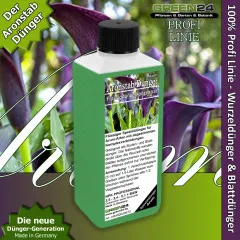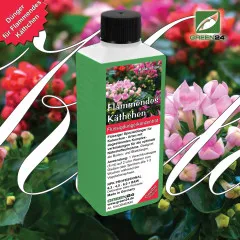Gardenia Success: GREEN24 Specialized Fertilizer for Spectacular Fragrant Bloom Cultures
Successful cultivation of gardenias requires special knowledge about the needs of these fascinating fragrant plants from the madder family. Gardenias, as acid-loving plants, have special nutrient requirements for optimal flower and growth development and need balanced supply during their active growing periods for maximum flower splendor and intense fragrance. Our gardenia fertilizer is specifically tailored to the needs of Gardenia jasminoides and related species and offers professional gardenia technology for maximum success.
Plant Profile: Gardenias (Gardenia jasminoides)
- Gardenias/Gardenia jasminoides:
- Family: Rubiaceae (Madder family)
- Origin: China, Japan, Korea
- Growth form: Evergreen shrub
- Special features: Fragrant flowers, acid-loving, lime-sensitive
- Cultural significance: Symbol of purity and love
- Popular Gardenia Varieties:
- Gardenia jasminoides (Main Species):
- 'Grandiflora' - Large, double flowers
- 'Veitchii' - Compact growth, abundant flowering
- 'Fortuniana' - Particularly fragrant
- 'Radicans' - Dwarf form, ground covering
- 'Mystery' - Single, bowl-shaped flowers
- Gardenia augusta:
- Synonym for Gardenia jasminoides
- Classic gardenia with white flowers
- Intense, sweet fragrance
- Flower Forms:
- Single flowers - Natural, bowl-shaped form
- Semi-double flowers - Multiple petal rows
- Double flowers - Lush, rose-like flowers
- All flowers are pure white and intensely fragrant
- Growth Forms:
- Upright growing varieties (1-2 m tall)
- Compact varieties (50-80 cm tall)
- Dwarf forms (20-40 cm tall)
- Ground covering forms (low, spreading)
- Gardenia jasminoides (Main Species):
- Gardenia Life Cycle:
- Spring (March-May): Emergence and growth phase
- Early Summer (May-July): Main flowering period
- Summer (July-September): Post-bloom and growth
- Autumn (October-November): Growth slows down
- Winter (December-February): Dormancy period
- Growth Characteristics:
- Evergreen, branched shrub
- Glossy, dark green leaves
- Waxy, white flowers
- Intense, sweet fragrance
- Cultural Properties:
- Acid-loving (pH 5.0-6.0)
- High humidity required
- Lime-sensitive
- Conservatory or houseplant
- Prefers warm temperatures
- Critical Factors: Lime water, dry air, alkaline substrate, waterlogging
- Common Problems: Yellow leaves, bud drop, no flowering, chlorosis, pest infestation
The Science of Gardenia Nutrition
The Gardenia Specialized Fertilizer Formula "Gardenia Pro"
Gardenias, as acid-loving plants, have special nutrient requirements for optimal development:
- Nitrogen (N) for leaf growth: Promotes formation of glossy, dark green leaves for maximum photosynthesis. Nitrogen is essential for healthy leaf growth and vigorous gardenias.
- Phosphorus (P) for flower formation: Intensively stimulates fragrant flower development and ensures rich, long-lasting flower splendor. Phosphorus is the key to spectacular gardenia flowers.
- Potassium (K) for stability: Strengthens the plant and increases resistance to stress. Potassium is important for stable branching and vitality.
- Magnesium (Mg) for chlorophyll: Central atom of chlorophyll, important for vigorous green leaves and optimal photosynthesis. Prevents yellowing of leaves.
- Iron (Fe) against chlorosis: Prevents iron deficiency chlorosis and ensures healthy, green leaves. Particularly important for acid-loving plants like gardenias.
- Sulfur (S) for pH value: Important for acidic pH range and protein synthesis, supports optimal nutrient uptake in gardenias.
- Trace element complex: Complete spectrum of all important micronutrients for optimal gardenia health.
- Complex compounds: Revolutionary technology for immediate nutrient availability and optimal uptake.
- Acid buffer: Special formulation for optimal pH range in acid-loving gardenias.
Application: Professional Gardenia Care
Root Fertilization (Main Application)
For fragrant flowers and healthy growth
- Timing: Throughout the entire growing season (March-October)
- Frequency: Every 2-3 weeks during growth and flowering phase
- Dosage: 1 closure cap (5ml) to 1-2 liters of water
- Application: As irrigation solution directly to gardenia roots
- Advantage: Sustainable nutrient supply through root system
- Special feature: Optimal uptake through complex compounds
Foliar Fertilization (Additional Application)
For quick nutrient uptake and immediate effect
- Timing: During growth phase for quick correction
- Dosage: Diluted solution for leaf spraying
- Application: Spray on leaves in early morning hours
- Particularly effective: For nutrient deficiency symptoms
- Additional benefit: Quick correction of chlorosis symptoms
Flower Splendor Promotion
For maximum flower number and intense fragrance
- Timing: Enhanced fertilization from bud formation (April-May)
- Dosage: Regular application during flowering phase
- Application: Continuous root fertilization for maximum flower splendor
- Particularly important: For rich flowering and intense fragrance
- Additional benefit: Extends flowering time and improves fragrance intensity
Care Guide for Successful Gardenia Culture
Optimal Gardenia Conditions
- Location: Bright but not full sun
- Temperature: 18-22°C for optimal development
- Humidity: 60-70% for best leaf and flower health
- Watering: Evenly moist, lime-free water
- Substrate: Acidic, well-draining rhododendron soil
- pH value: 5.0-6.0 for optimal nutrient uptake
Gardenia Equipment and Methods
- Saucers: For even watering
- Humidifier: For optimal humidity
- pH meter: For substrate control
- Lime-free water: Rainwater or distilled water
- Rhododendron soil: Special acidic substrate
Special Features of Gardenia Culture and Their Application
Professional Gardenia Techniques
- Fragrance optimization: Proper fertilization for intense flower fragrance
- Bud drop prevention: Optimal conditions during flowering
- Humidity control: Creating microclimate for gardenias
- pH management: Maintaining acidic conditions
Variety-Specific Application
Different gardenia types
- Large-flowered varieties: Intensive fertilization for lush flowers
- Compact varieties: Moderate fertilization for proportional growth
- Dwarf forms: Adapted fertilization for small plants
- Double varieties: Enhanced phosphorus fertilization for lush flowers
Seasonal Gardenia Care
- Spring (March-May): Promote emergence, first fertilization
- Early Summer (May-July): Main flowering time, intensive fertilization
- Summer (July-September): Post-bloom fertilization, growth promotion
- Autumn/Winter (October-February): Reduce fertilization, dormancy period
Problem Solving Through Targeted Nutrient Supply
Common Gardenia Problems and Their Solutions
- Yellow leaves: Iron deficiency or lime water → Give iron fertilizer, use lime-free water
- Bud drop: Too dry air or location change → Increase humidity, maintain location
- No flowering: Nutrient deficiency or wrong pH → Enhanced phosphorus fertilization, check pH value
- Weak flowers: Nutrient deficiency → Regular NPK fertilization
- Chlorosis: Iron deficiency or alkaline substrate → Lower pH value, iron fertilizer
- Poor fragrance: Nutrient deficiency → Balanced fertilization for optimal flower quality
Effects of Optimal Fertilization
- Fragrant flower splendor: Rich, intensely fragrant flowers over long periods
- Glossy leaves: Vigorous, dark green leaves without chlorosis
- Stable branching: Bushy, compact growth
- Long flowering period: Extended flowering phase with continuous flower formation
- Healthy plants: Resistant gardenias against stress and diseases
- Intense fragrance: Maximum fragrance intensity of flowers
Modern Gardenia Technology
Houseplant Culture (Main Application)
- Living space integration: Fragrant houseplants for home
- Microclimate creation: Optimal conditions indoors
- Fragrance experience: Natural room fragrance through flowers
- Air purification: Improvement of indoor air quality
Conservatory Culture
- Year-round culture: Optimal conditions in conservatory
- Collector plants: Different gardenia varieties
- Fragrance garden: Combination with other fragrant plants
- Cut flowers: Flowers for fragrant bouquets
Commercial Culture
- Potted plant production: Ready-to-sell gardenias
- Cut flower production: Fragrant flowers for floristry
- Fragrance oil extraction: Commercial fragrance production
- Wedding decoration: Popular bridal flowers
Metabolism Optimization for Gardenias
Acid-Loving Plant Physiology
- pH-dependent nutrient uptake: Optimal availability in acidic range
- Iron metabolism: Special requirements of acid-loving plants
- Lime sensitivity: Adaptations to lime-free conditions
Fragrance Development
- Essential oils: Production of fragrant compounds
- Flower metabolism: Energy provision for fragrance production
- Fragrance intensity: Nutrient supply for maximum fragrance
Stress Resistance
- Humidity adaptation: Tolerance to dry air
- Temperature resistance: Adaptation to indoor conditions
- Disease defense: Strengthen natural resistance
GREEN24 Gardenia Specialized Fertilizer "Gardenia Pro"
Complex compound technology and gardenia specialization
- Gardenia specialist: Optimized for Gardenia jasminoides and all species
- NPK formula: Balanced nutrient supply for optimal growth
- Dual application: Root and foliar fertilization possible
- Complex compounds: Fast availability for immediate results
- Flower promotion: Pronounced flower formation and intense fragrance
- High concentrate: 250ml for up to 125 liters of solution
GREEN24 Quality Standard
Gardenia expertise and professional quality
- Professional quality: Nursery standard for gardenia culture
- Consistent results: Consistent quality in every batch
- Scientifically based: Specially developed for acid-loving plants
- Field-tested: Proven in gardenia culture
Frequently Asked Questions (FAQ)
When and how often should I fertilize my gardenias?
Fertilize your gardenias every 2-3 weeks during the growing season from March to October. Fertilization is particularly important during the growth and flowering phase in spring and early summer.
Can I use the fertilizer for both root and foliar fertilization?
Yes, our gardenia fertilizer is versatile. Use it as irrigation solution for sustainable root fertilization or as foliar spray for quick nutrient uptake in case of deficiency symptoms.
Why do the leaves of my gardenia turn yellow?
Yellow leaves usually indicate iron deficiency (chlorosis) or too alkaline substrate. Use lime-free water, acidic substrate and possibly additional iron fertilizer.
Why do the buds of my gardenia drop?
Bud drop usually occurs due to too dry air, location changes or water stress. Increase humidity, avoid location changes and water evenly.
What water should I use for my gardenias?
Gardenias prefer lime-free, soft water. Use rainwater or distilled water preferably. Hard tap water can lead to chlorosis and poor growth.
How can I extend the flowering period of my gardenias?
Regular fertilization, optimal humidity, even watering and a stable location extend the flowering period. Avoid stress factors during the flowering phase.
Mandatory Application Instructions
- Information sheet 130405 must be observed! You can find this at the URL https://www.green24.de/NPK.pdf
- Always observe the label!
- Do not apply undiluted.
- Shake well before use.
- Only apply during the growing season.
Safety Instructions
- Avoid contact with eyes, skin and clothing.
- Do not inhale spray and spray mist.
- Keep away from food and beverages.
- Wash face and hands thoroughly after use.
- Recommendations from official advisory services take precedence.
- Fertilizers may leave stains on surfaces that may not be removable.
Storage
- Store dry, dark at +8 °C to +40 °C.
- Keep out of reach of children and animals.
- Fertilizer must not be introduced into water bodies or reach sewage systems.
- With proper storage, shelf life of several years without loss of quality.
- Use diluted fertilizer promptly.



